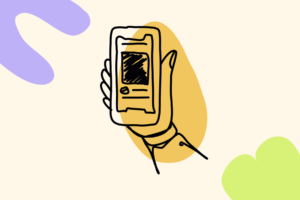Today’s digital landscape is evolving at immense speed, and provides incredible opportunities for digital creators of all types. While AI provides a lot of exciting applications for creators, it also disrupts how we secure digital assets. In particular, any digital asset placed online may be used (either explicitly or through other means) to train AI systems via data scraping, potentially devaluing the work of creators.
While some platforms have found ways to ensure their users are protected against data scraping using techniques such as tagging (#NoAI, e.g. Artstation, Sketchfab, etc.), the question remains of how much we can trust these implementations.
By leveraging Web3 technologies like Unlock Protocol (onchain memberships) and Darkblock (gated storage on blockchain level), creators can secure their digital assets onchain, guaranteeing that their creations remain under their control. This provides unique power to the original creator but also enhances the value and credibility of their work in the ever-competitive AI-driven market while enabling public distribution of the assets at the same time.
This tutorial guides you through an eight-step process to help you master digital asset distribution with Unlock Protocol and Darkblock. To get there, we will utilize three different platforms: Unlock Protocol, Darkblock.io, and Neynar.com. This guide is also available as a video tutorial.
Let’s get started!
Step 1 | Connecting Your Wallet and Creating a Smart Contract
To create our own smart contract, we will connect our wallet to Unlock Protocol and select “Create Lock” from the dashboard. In our case and for our specific purpose it is best to pick “I am not sure yet, let me create my own membership contract.” In the following pop-up, we can select from different networks/ blockchains, give a title to our contract, set a membership duration, and more. Feel free to adjust this to your needs. After hitting “Next,” a confirmation page will appear. If everything looks alright, let’s get this contract minted.
Step 2 | Adding Metadata and License Information
Depending on your chosen network, the lock should be ready for you to manage in seconds. You can head to the “Locks” section and pick your lock (small arrow to the right). Under the generated Unlock icon, you will see “Metadata Editor” in a highlighted color. Select it, and it will transfer you to the Editor so we can add our desired image icon (in our case, an animated gif), an external link, a detailed description, and important metadata. In our example, we embed the license type directly into the contract and specify that users can find the attached files on Darkblock.io. Don’t forget to hit “Save Properties” at the bottom of the page before returning to your contract/ lock dashboard.
(The License Chooser by CreativeCommons can help you specify the exact CC license under which you would like to distribute your digital assets. Try it out and don’t forget to embed it in your smart contracts metadata.)
Step 3 | Adjusting Advanced Settings
On the lock dashboard, we will now take a small excursion to the more advanced section. On the upper right, you see a button called “Settings.” Head there to change and update the Ticker Symbol under “General” and adjust the “Maximum number of keys per address” under the “Membership Terms” tab. Again, if these adjustments don’t seem important to you, just skip this part. Your contract will work nonetheless. Updating these settings takes a few seconds; head back to your contract/ lock dashboard after you are done.
Step 4 | Airdropping a Key for Testing
Back on the dashboard of your smart contract, head over to another button on the upper right called “Tools” and select “Airdrop Keys” from the list. A side window will pop up, allowing you to add your wallet and issue one key to yourself. Once we are done adding the files, you can verify if all of them are attached correctly.
Step 5 | Adding Digital Assets on Darkblock.io
Now, our second tool is up, which means we have to connect our wallet to Darkblock.io and, in our specific case, to the Base blockchain. Of course, if you selected another blockchain, ensure that you select that specific one to move forward. On the Darkblock dashboard, we select “+ Upgrade” and “Upgrade a Collection.” A new page appears on which we will first paste our smart contract from the Unlock dashboard (there is a small copy icon right next to the beginning of a very long number; hit that one). Make sure to check “Enforce Unlock Protocol expiration for this Darkblock” before selecting further down the token standard to be ERC-721. Lastly, add your first file by clicking on “Choose File”, adjust the name, and check “Allow download.” Now, “Create” your first Darkblock. Granting your signature will enable the Darkblock to compose. In return the dashboard should show success and allow you to immediately add the next Darkblock to your collection. Add as many as make sense.
Step 6 | Running a Test
To ensure we distribute the NFT with everything in order, we will now use the key we airdropped to ourselves before. On the Darkblock dashboard, pick “My NFTs” on the upper right and select the one you airdropped. A pop-up will appear on a new page requiring you to authenticate your ownership. One signature should suffice to enter and freely download the files (three little stacked dots) as you see fit.
Step 7 | Setting Up Unlock Checkout
Now, it is time to build our own checkout experience with the Unlock Protocol Checkout Builder. To access it, head back to your lock on Unlock Protocol and pick “Tools” again, this time selecting “Checkout URLs.” The process is straightforward and will enable users to purchase your NFT and simultaneously your digital assets. Create a new configuration and fill out what makes the most sense. In the third section, add your specific lock before heading to step four and receiving your checkout link.
Step 8 | Configuring Farcaster Frame on Neynar.com
The last step is all about finding new ways to distribute your on-chain digital assets. A good source for that is Farcaster, “a sufficiently decentralized” social media platform that has gathered a lot of traction throughout the first quarter of 2024. Farcaster features a mini-application called “frames,” which allows you to interact with the audience immediately. One of the applications of frames is instant minting. We can’t do that yet, but it is almost as instant with one click in between.
First, we will need to open Neynar.com, create a profile, and subscribe to the lowest tier. In the “Frame Studio,” we can add our first frame by selecting “+ New Frame” in the upper right corner. Add what you wish to and heed the file size for the preview images. The button for my Unlock Checkout URL had the “Destination Type” set to “External URL.” After that is set you hit “Create,” copy the URL Neynar provides, and post your mintable NFT directly on Farcaster.
Conclusion
Creating a smart contract sounds scary, but I hope this guide shows that, thanks to Unlock Protocol, these times are long past. As a creator, especially in today’s world, it is more important than ever to care for your licensing rights and create content under the conditions YOU desire.
Resource Links
- Video and other resource files | Link
- Checkout Link | https://app.unlock-protocol.com/checkout?id=f75a6418-274d-4500-992e-79380e315ba3
- Farcaster Frame Link | https://frames.neynar.com/f/8156dfa4/a0513ce9
The Farcaster logo was licensed under a Creative Commons license and, therefore, can be utilized under these specified conditions: https://github.com/vrypan/farcaster-brand





